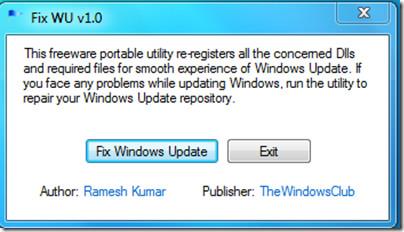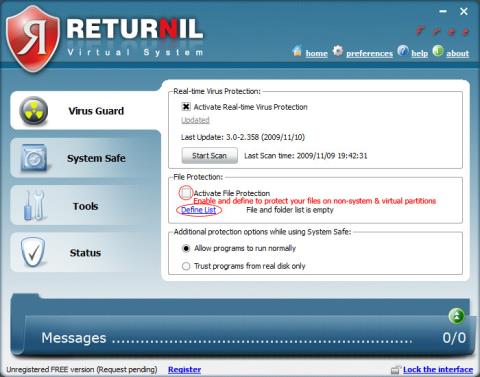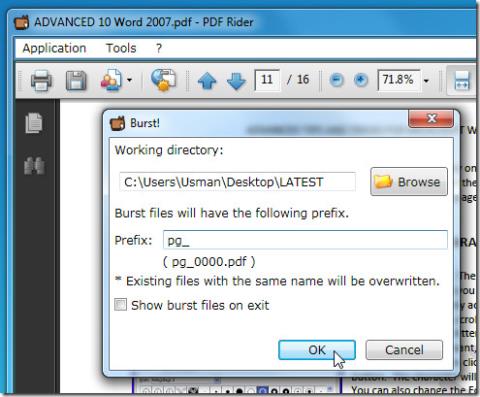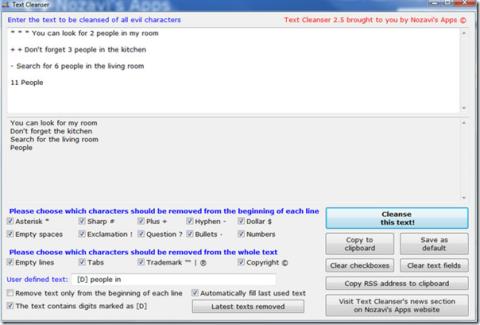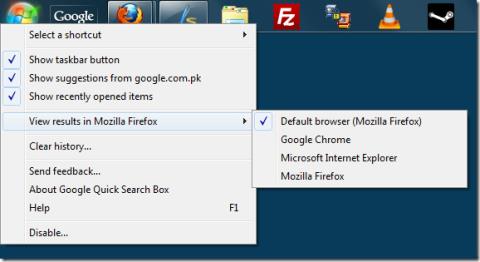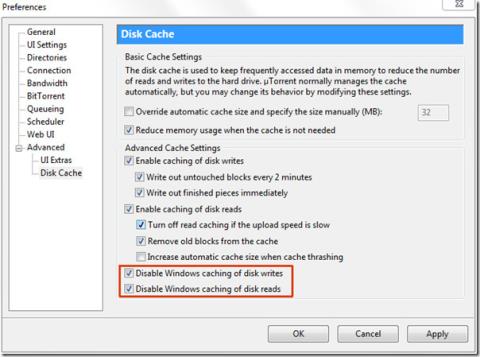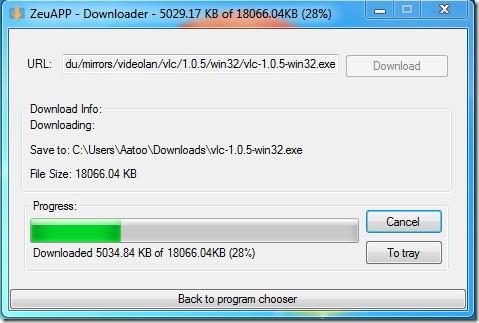Как выключить компьютер с телефона
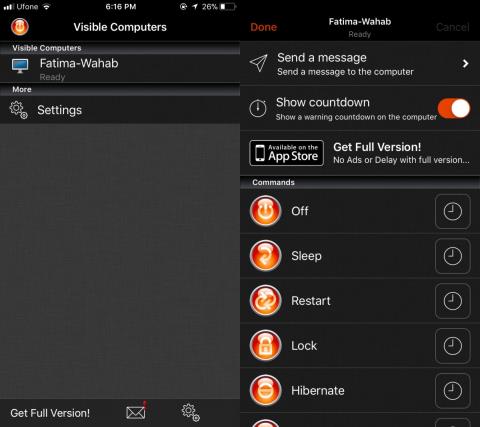
Как выключить компьютер с телефона
0x80080005 - это код ошибки, о котором многие пользователи сообщают при попытке запустить Центр обновления Windows. Это предотвращает загрузку и применение последних обновлений вашей операционной системы, что может вызвать серьезные проблемы в долгосрочной перспективе.
Например, у вас могут возникнуть проблемы с обновлением приложений Microsoft Store без последних обновлений системы. Ошибка может быть вызвана программной или аппаратной ошибкой. Обычно это связано с настройками вашего компьютера или сетевого подключения, а это означает, что вы сможете легко решить их, используя приведенные ниже решения.
Перед тем, как начать процесс устранения неполадок, обязательно создайте точку восстановления системы на своем ПК. Если по пути вы столкнетесь с дополнительными проблемами, вы можете отменить их, откатив Windows 10 до точки восстановления.
Кроме того, вам следует попробовать запустить Центр обновления Windows, чтобы подтвердить ошибку:
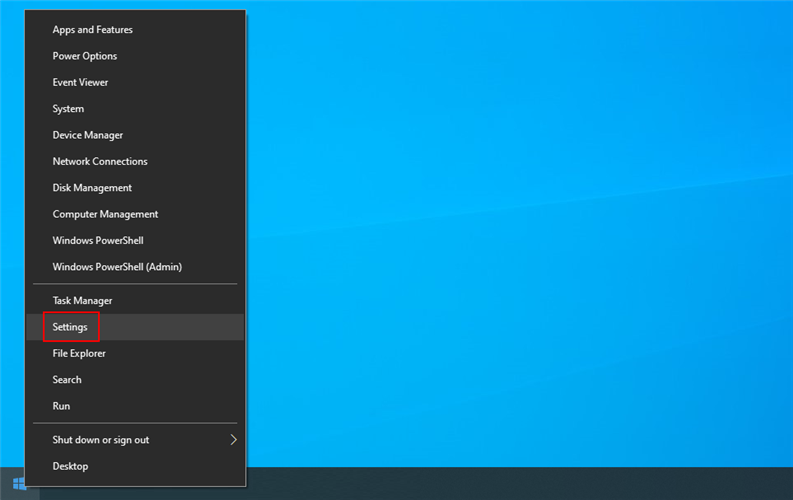
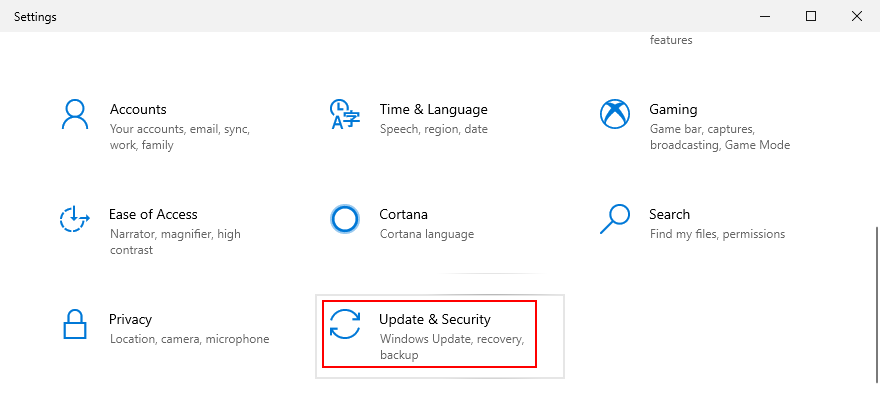
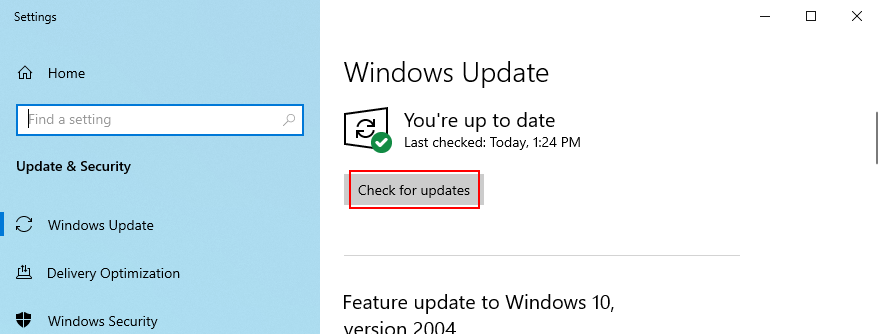
Вы можете начать с простого решения: воспользуйтесь средством устранения неполадок Центра обновления Windows . Он предназначен для выявления и устранения распространенных проблем, препятствующих обновлению вашей операционной системы. Вот как это использовать:


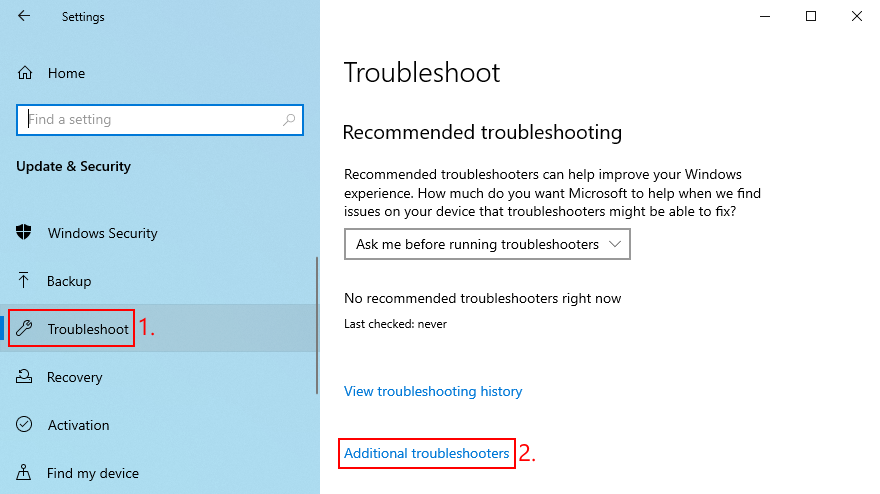
Если встроенное средство устранения неполадок не помогло, вы можете обратиться к диагностике Центра обновления Windows. Это инструмент, созданный Microsoft для диагностики и устранения проблем с Центром обновления Windows, который необходимо установить отдельно. Вот как это использовать:
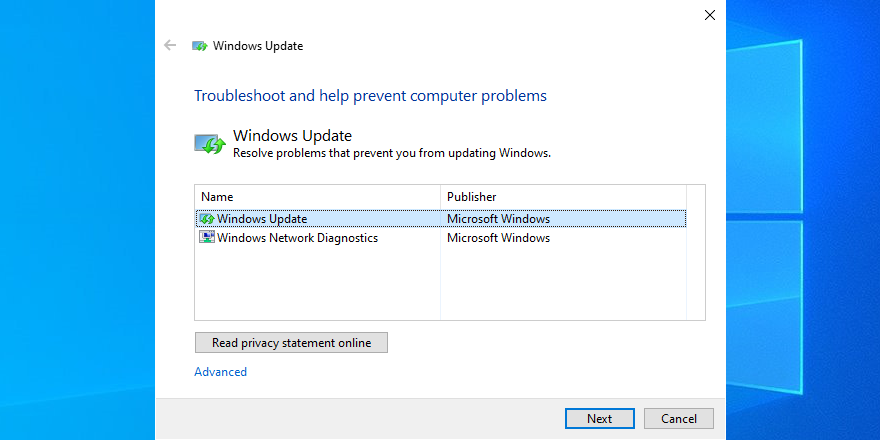
Центр обновления Windows управляется службой, которая должна автоматически запускаться при загрузке системы и работать в любое время. Если по какой-то причине этого не происходит, вы можете ожидать коды ошибок, такие как 0x80080005. К счастью, вы можете легко решить эту проблему:
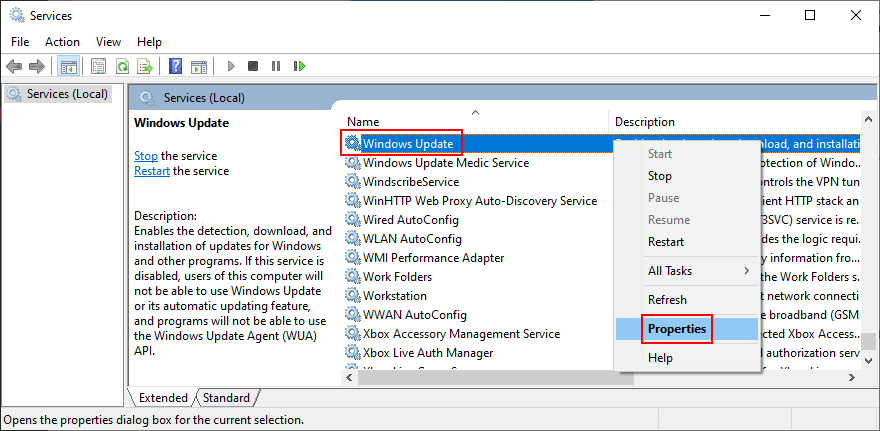
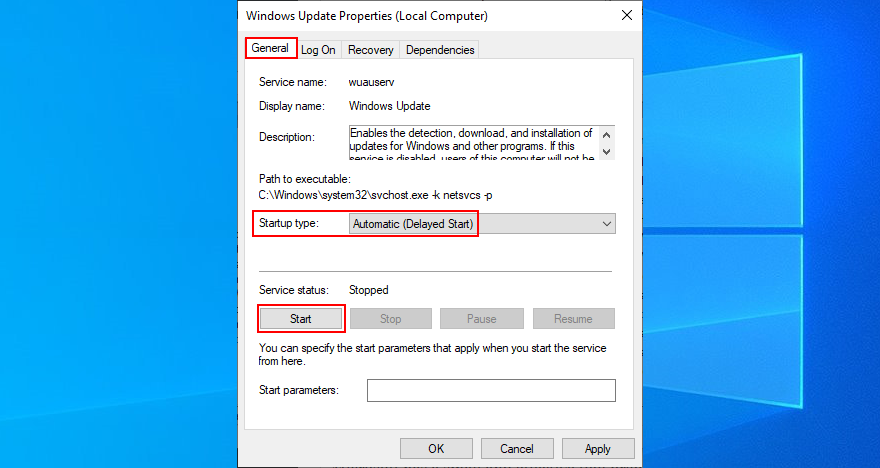
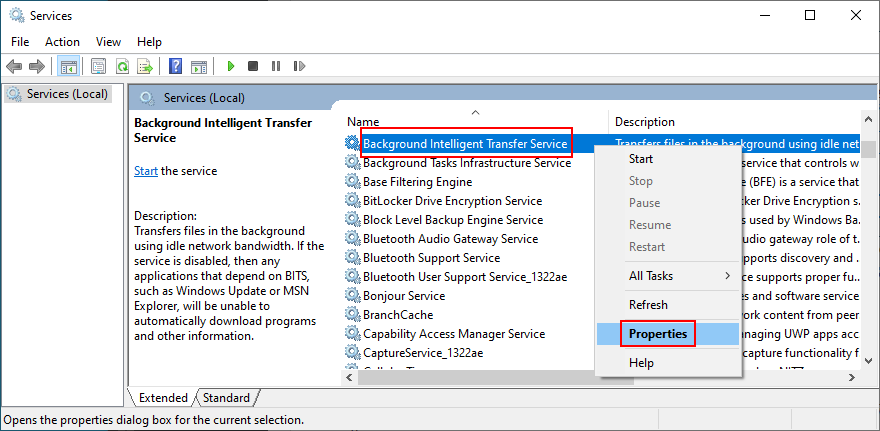
Служба списка сетей требуется, но некоторые пользователи сообщают, что она вызывает проблемы с Центром обновления Windows, которые привели к ошибке 0x80080005. Вот как это выключить:

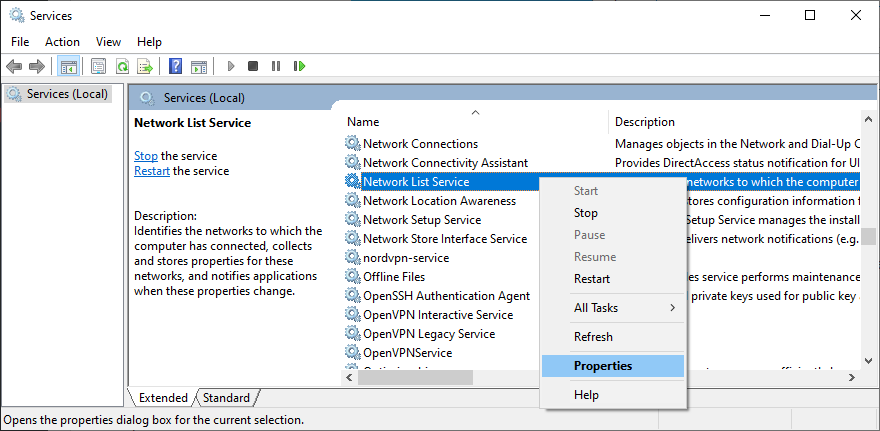
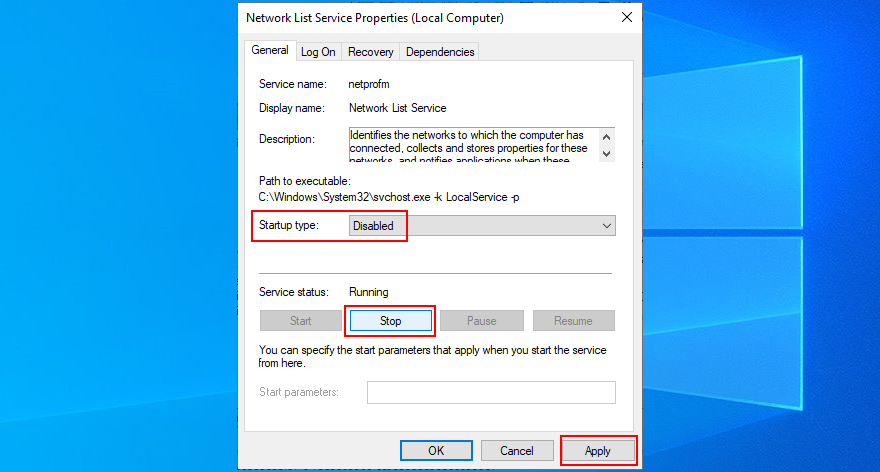
Возможно, что код ошибки Центра обновления Windows 0x80080005 был вызван неправильными настройками в групповой политике. Вот как проверить и исправить эту проблему:

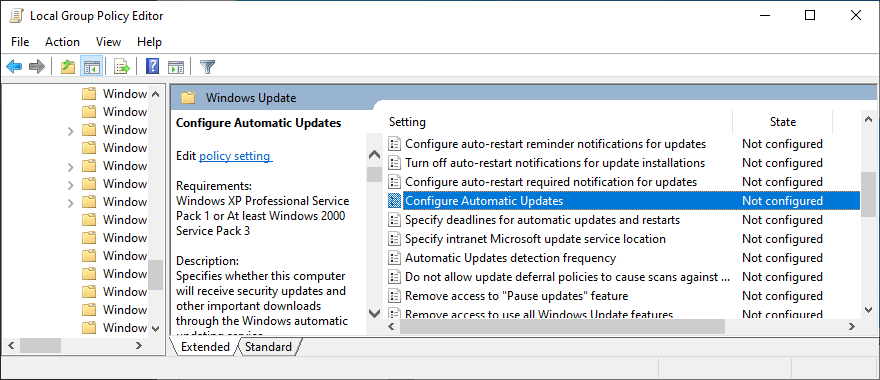
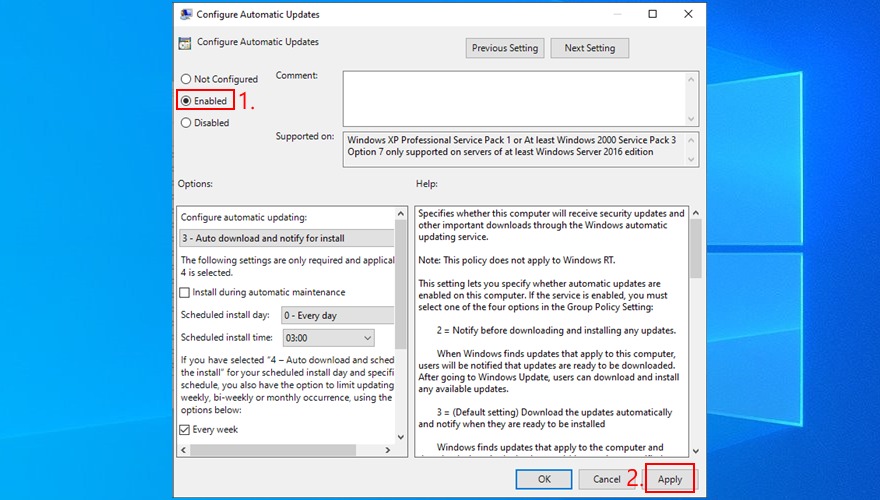
Вы можете быстро сбросить компоненты Центра обновления Windows, чтобы очистить кеш и исправить общие проблемы, которые могли привести к ошибке 0x80080005. Для этого вам просто нужно использовать командную строку. Вот что вам следует делать:
чистая остановка wuauserv
чистая остановка cryptSvc
чистые стоповые биты
net stop msiserver
ren C: \ Windows \ SoftwareDistribution SoftwareDistribution.old
ren C: \ Windows \ System32 \ catroot2 Catroot2.old
чистый старт wuauserv
чистый старт cryptSvc
чистые стартовые биты
чистый старт msiserver
Any external devices that you recently plugged into your computer could have caused error code 0x80080005 due to compatibility or driver issues. Think about any new pieces of hardware you purchased or received as a gift, such as USB pen drives, Wi-Fi adapters, or webcams with plug-and-play features.
To handle this matter, shut down your computer and unplug all peripheral devices, except for your keyboard and mouse. Then, boot the operating system and run Windows Update to confirm that you’re not getting the error anymore.
You have two options at this point: replug all devices and detach them whenever you need to run Windows Update, or single out the guilty piece of equipment to either fix it or stop using it.
A clean Windows 10 boot means turning off all unnecessary components that may cause software problems, such as drivers, services, and processes. It can help you rule out issues that led to Windows Update error 0x80080005. Here’s what you need to do:
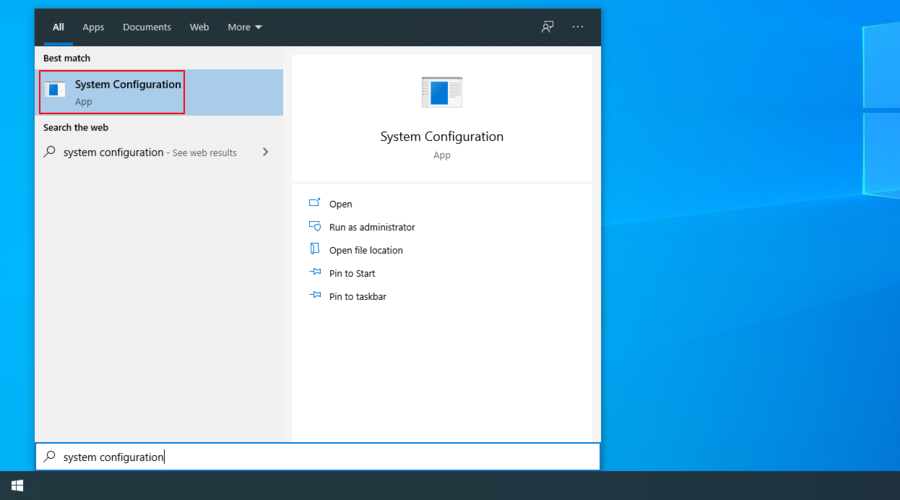
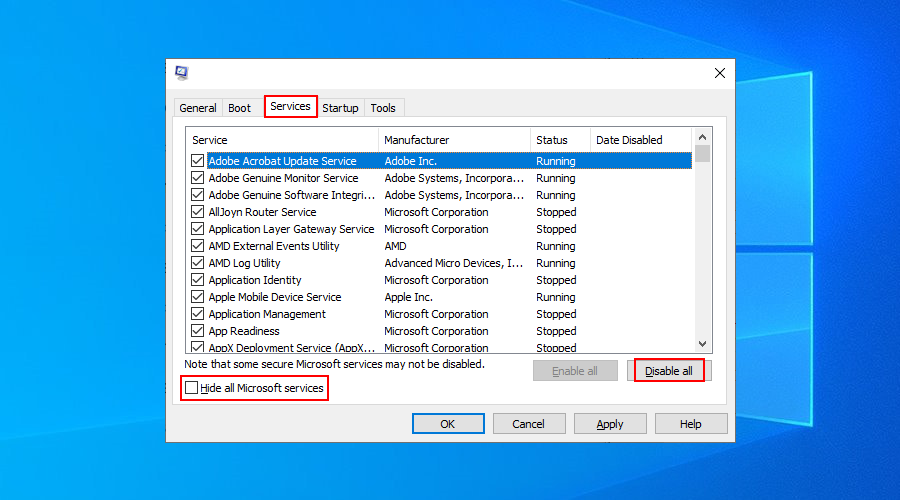

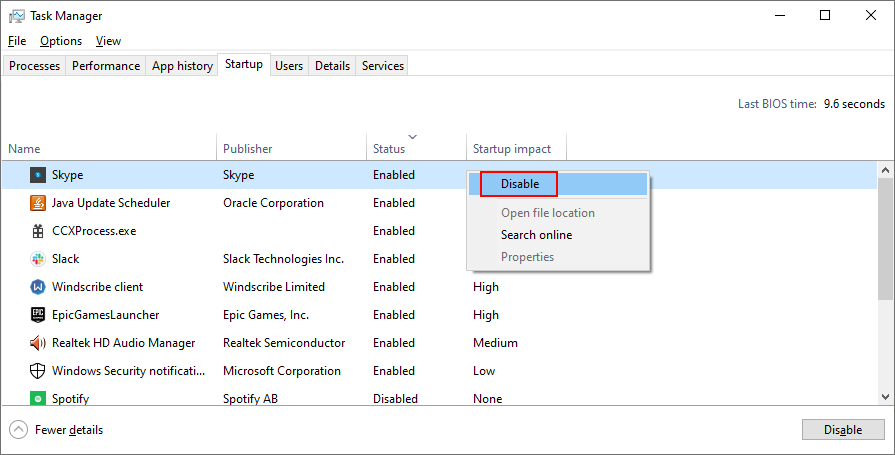
It’s unlikely, but Windows Update could be blocked by your firewall. It usually happens when you change the default firewall settings or install a third-party firewall application that makes it happen.
To stay on the safe side, you can temporarily turn off the firewall to give Windows enough time to install updates. Just make sure to restart it afterward. Otherwise, you will leave your computer exposed to malware.
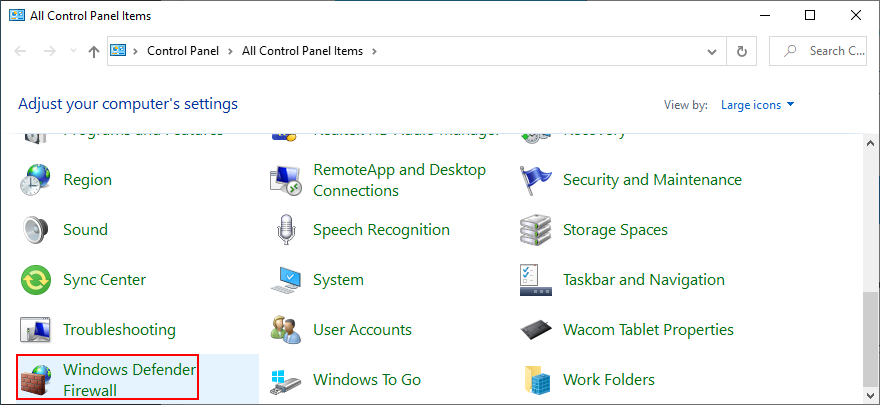
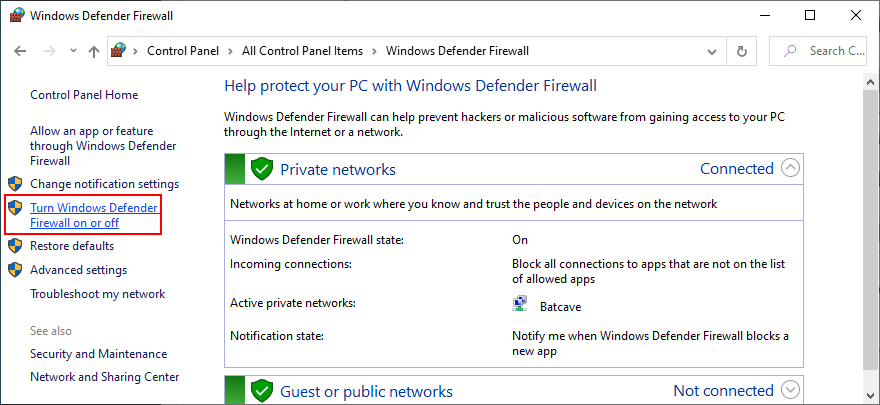
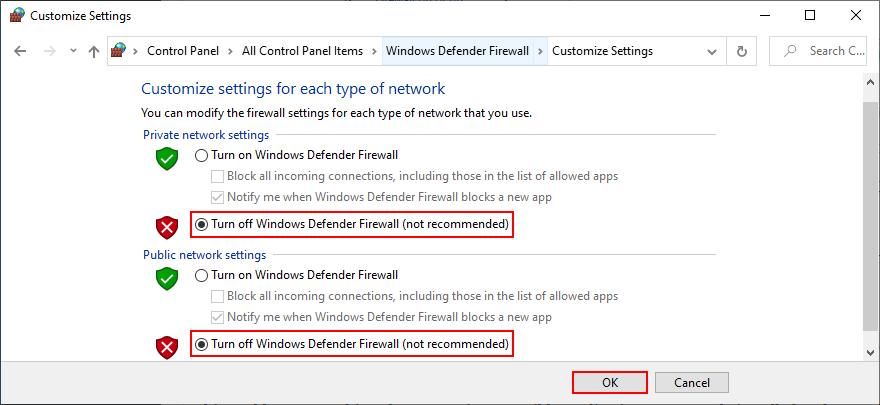
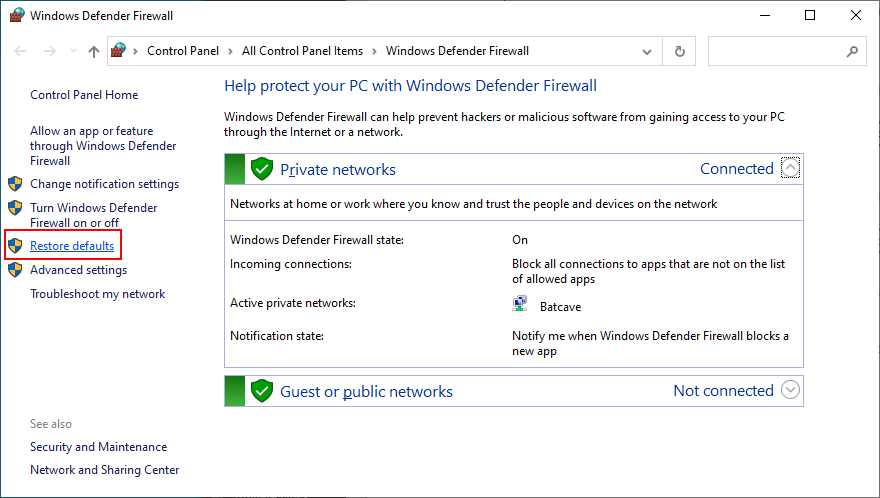
If you have a third-party firewall that takes over Windows Firewall, adapt the steps above to temporarily turn it off.
In the previous solution, we mentioned that a third-party firewall with incorrect settings could block Windows Update and, subsequently, trigger error codes like 0x80080005. However, it’s also possible that the firewall application is built poorly or doesn’t fully support your Windows edition.
It applies not only to firewall apps but also any programs with Internet access. This includes Internet security solutions, VPN services, web browsers, or torrenting clients.
If you started experiencing Windows Update errors right after adding a new piece of software to your PC, that could be the guilty party. But you should be able to fix this problem by uninstalling it.
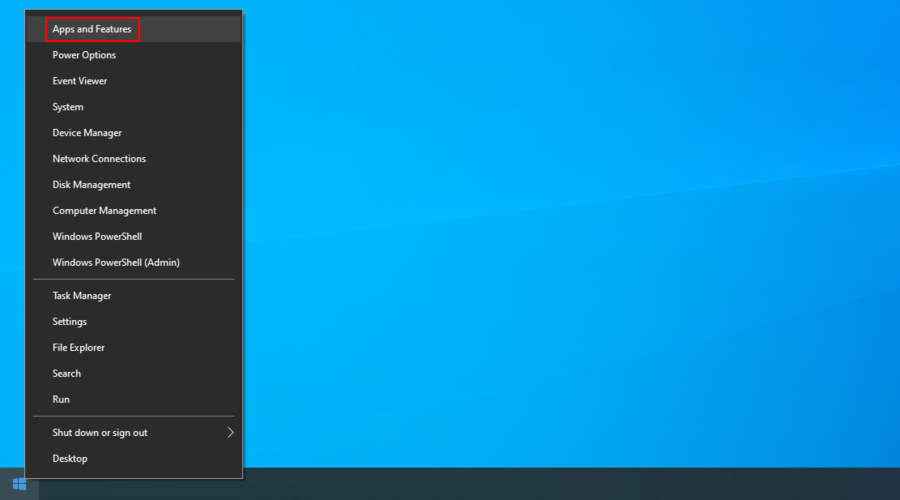
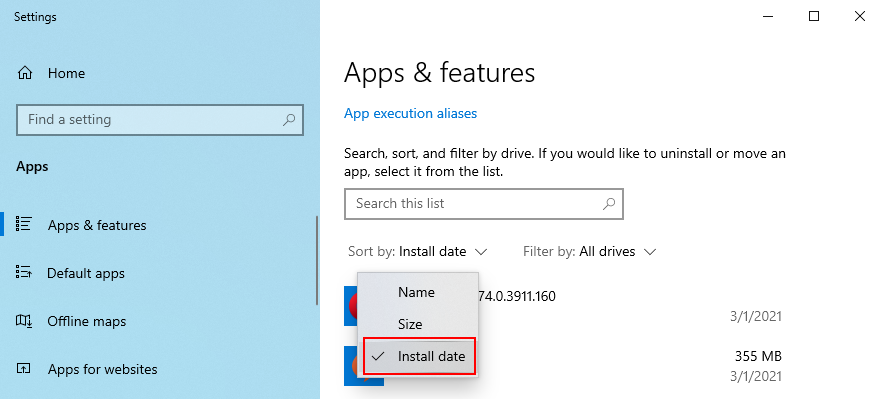
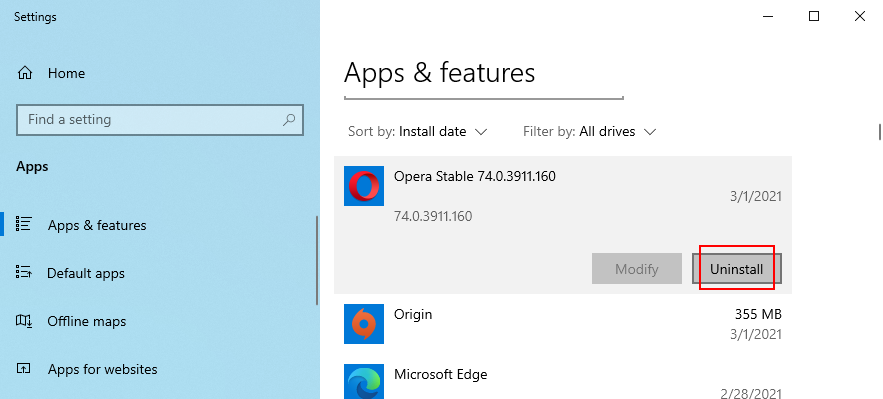
The Windows 10 built-in uninstaller is not that effective. If you prefer a more thorough solution that removes not only programs but also any leftover files and registry entries, use a third-party app uninstaller.
Not only software applications can cause Windows Update issues but also a faulty system update. It’s not uncommon for Microsoft to push unreliable updates that affect the computers of millions of users. In some cases, this could even lead to error code 0x80080005.
But you can fix it by uninstalling the most recent Windows updates. Here’s how:

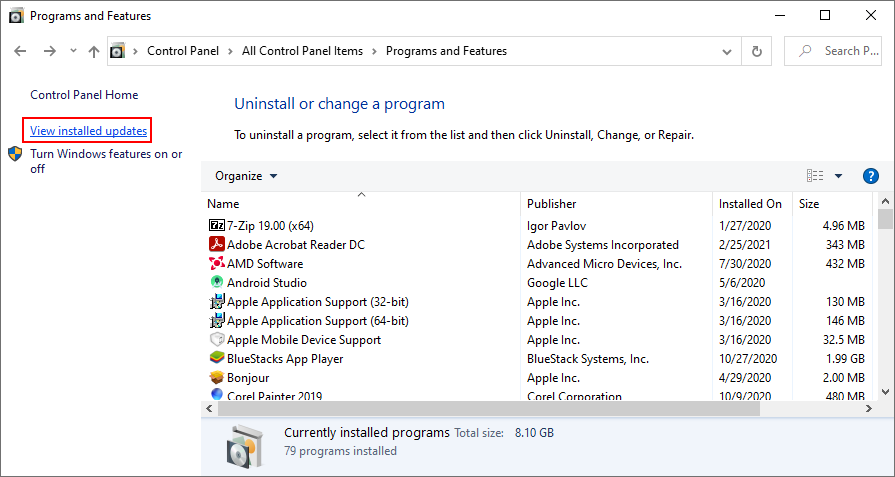
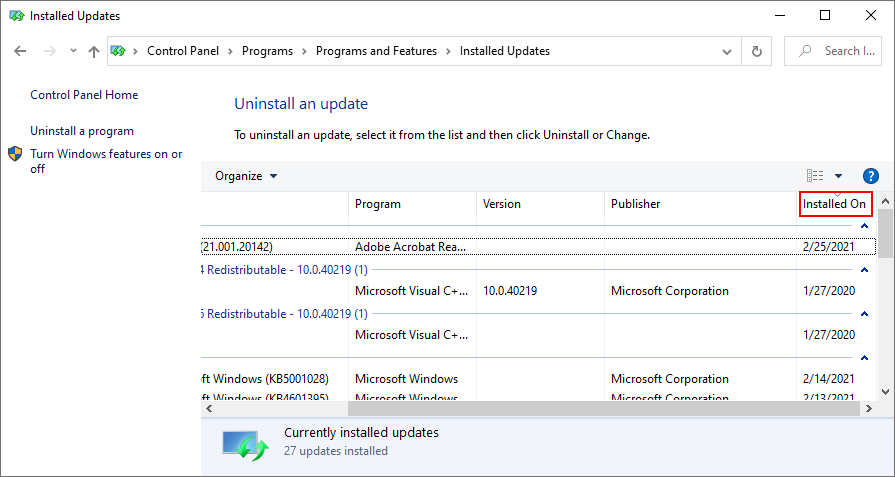
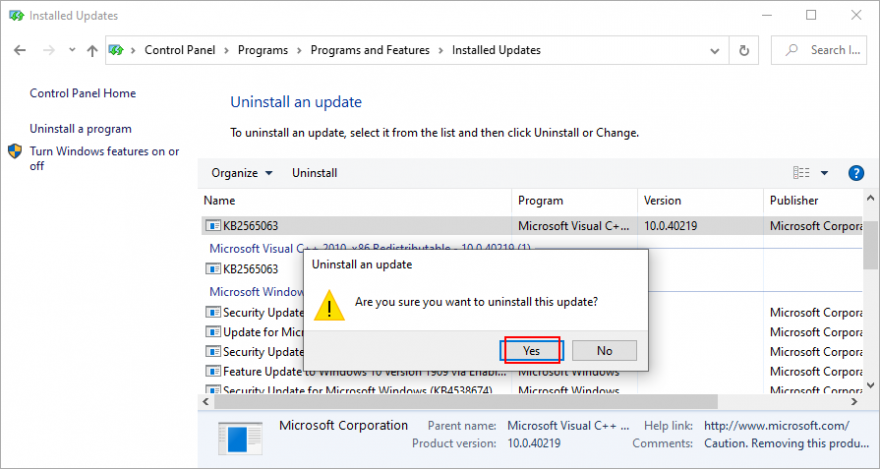
If there isn’t enough free disk space on your computer, Windows Update might not be able to carry out its activities, like downloading files or running background processes. You can tell if you get the insufficient disk space message in the notifications center.
To fix this problem, you can increase the disk space on the C: drive (or wherever you have Windows installed) by turning to a partition manager. However, if you don’t want to install any third-party tools, Disk Management should do the trick.
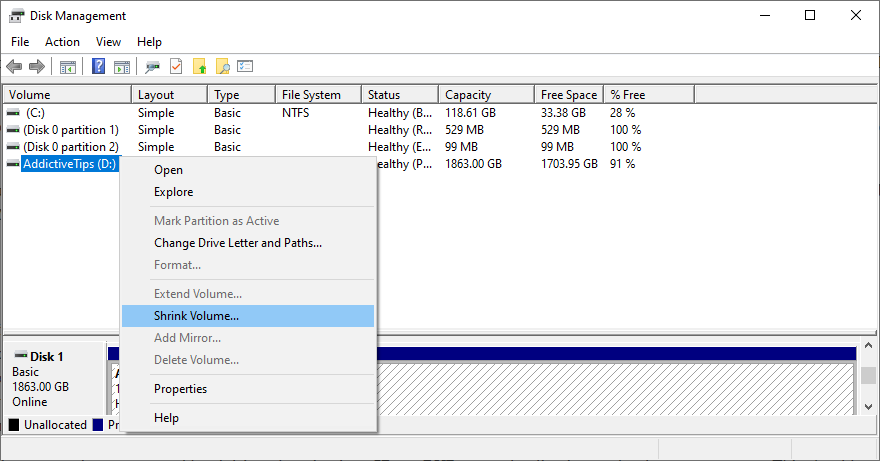
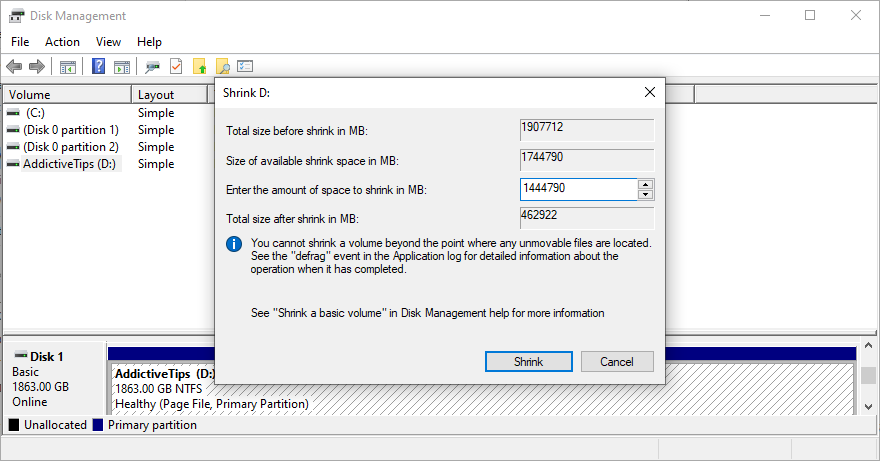
If your hard disk is not big enough to allocate disk space from one partition to another, a workaround is to remove files from your PC to make room for Windows Update. Move personal photos and videos to an external hard disk, burn them to DVDs, or upload them to cloud storage accounts.
You can also uninstall large games and applications, as well as get rid of junk files with the help of a system cleaner. Or, if you don’t want to install anything extra, check out the Windows Disk Cleanup utility.
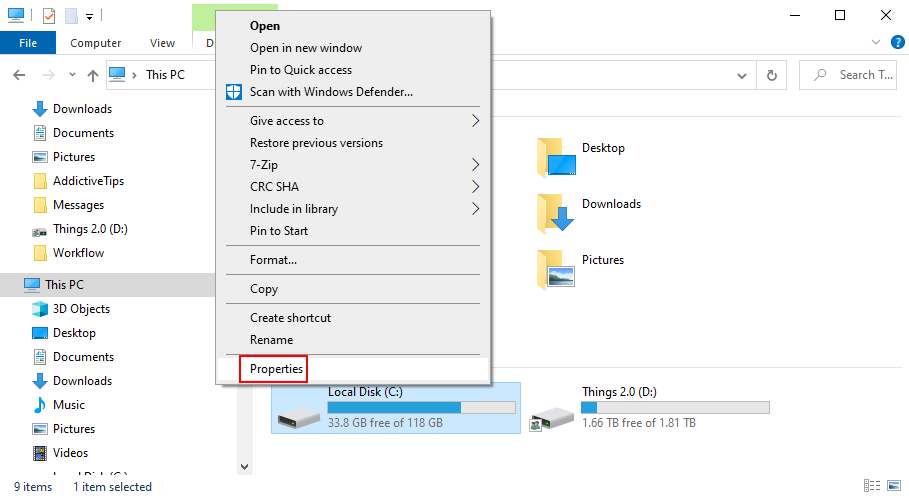
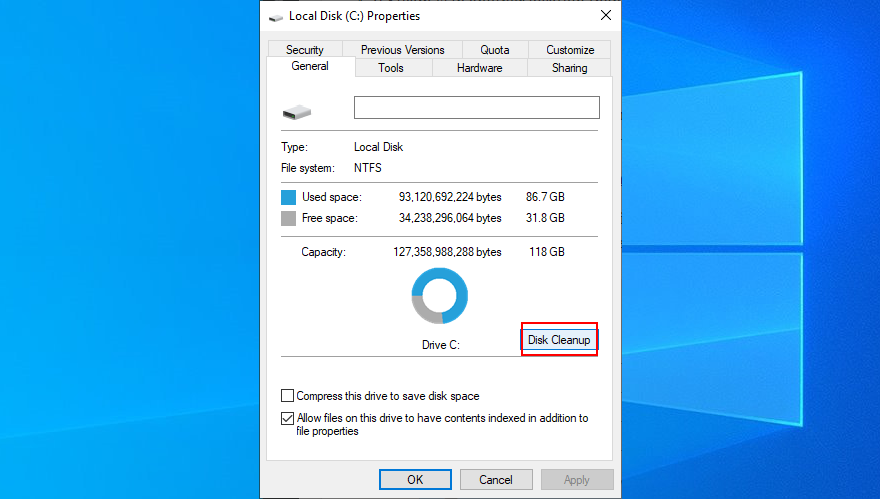
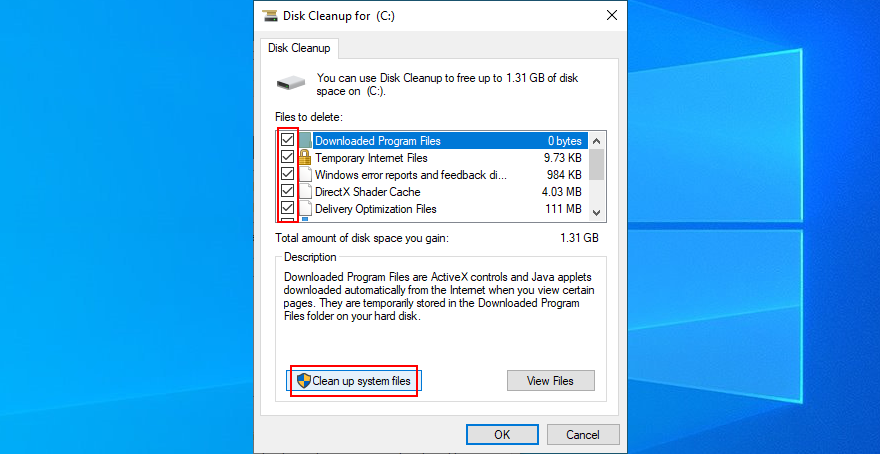
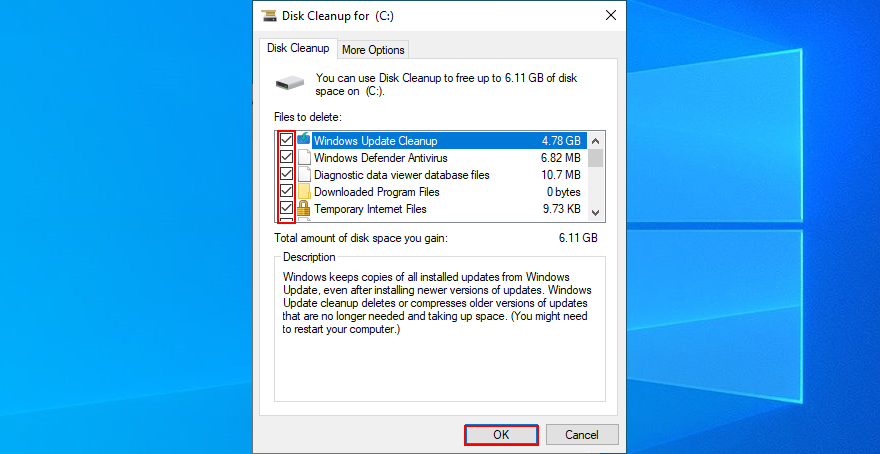
It’s common for driver issues to interfere with all applications and system utilities that require Internet access, including Windows Update. For instance, if your network device is not working properly, it could be the reason why you keep getting error code 0x80080005. It’s also possible that your network driver is obsolete or incompatible with your operating system. Here’s what you need to do:
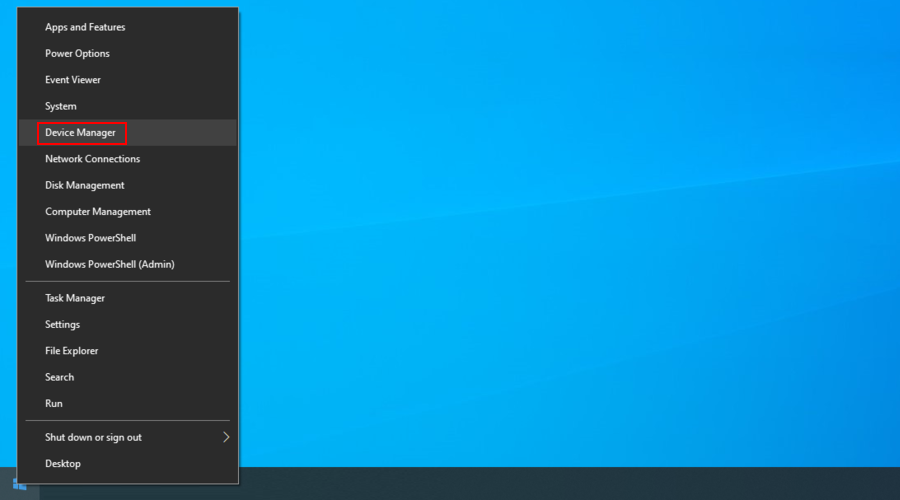
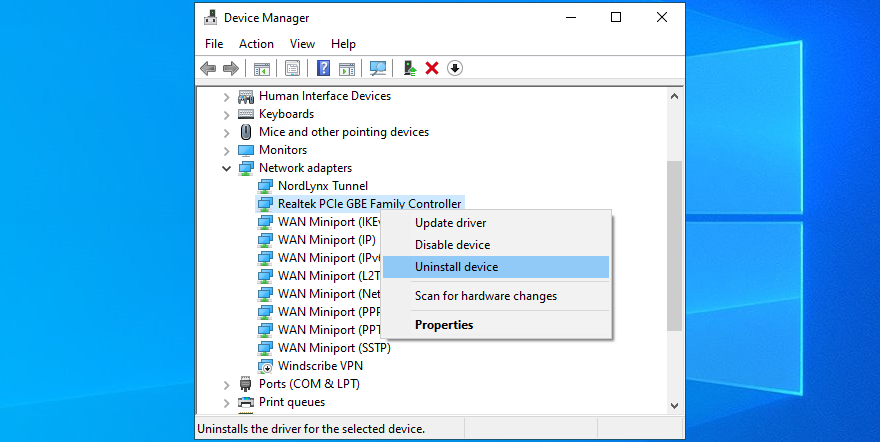
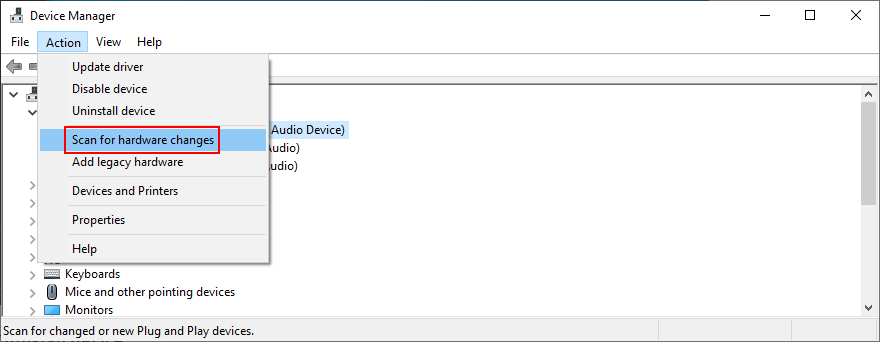
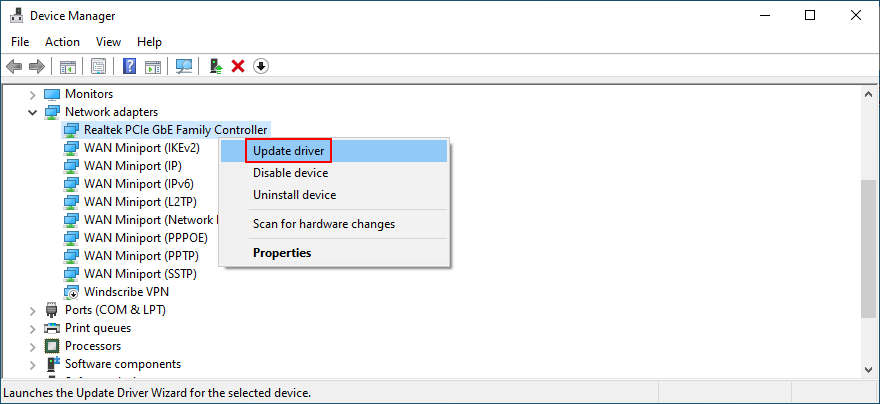
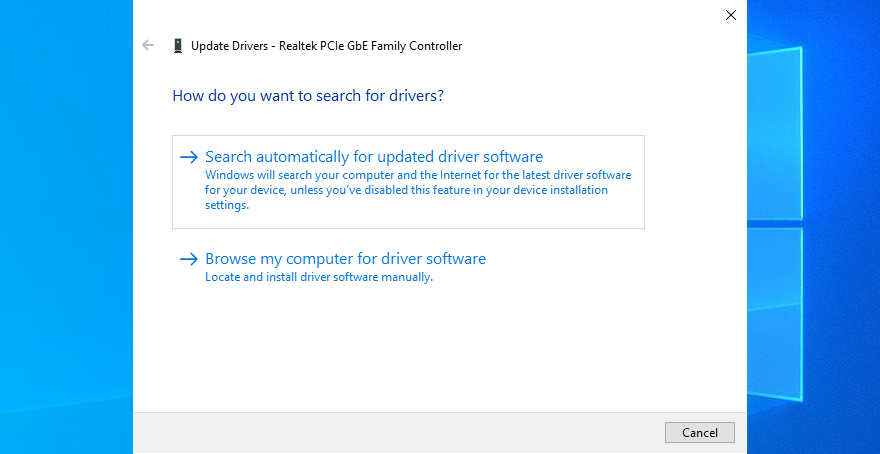
If Windows fails to find a network driver, we suggest turning to a driver update tool. It identifies all outdated drivers on your PC and finds newer versions on the web that are compatible with your operating system. Furthermore, it can automatically download and install all drivers.
Data corruption in the hard disk or operating system can be devastating to all system utilities, including Windows Update. If you have a missing or damaged file that’s critical for the updater component, it’s no wonder that you get error codes like 0x80080005.
To fix HDD errors, you can use CHKDSK (Check Disk). When it comes to damaged system files, use SFC (System File Checker). Lastly, for more serious problems with the component store of the Windows image, turn to DISM (Deployment Image Servicing and Management).
chkdsk c: /f if your operating system is installed on the C: drive. If it’s not, replace c: with the correct partition letter. Press Enter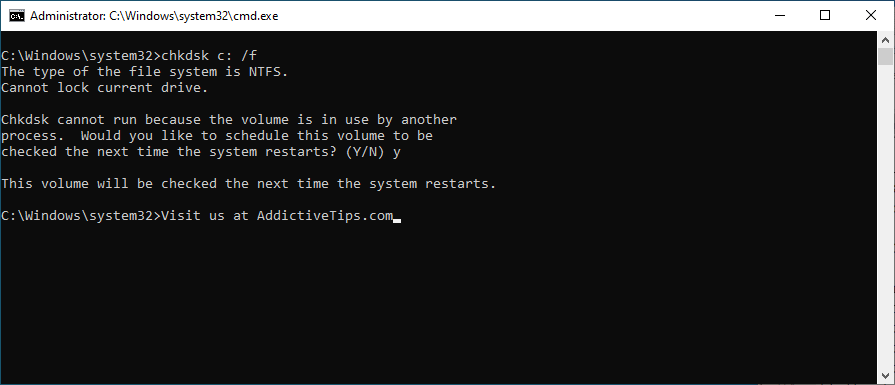

sfc /scannow and press Enter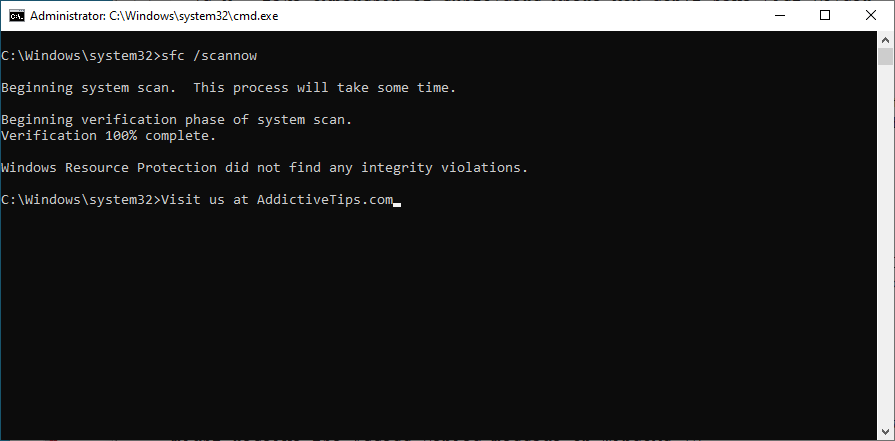
DISM /online /cleanup-image /scanhealth to check the health of your operating system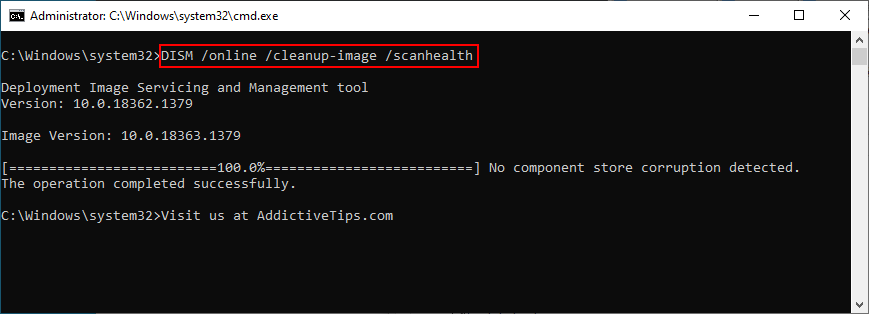
DISM /online /cleanup-image /restorehealth and press Enter to fix themsfc /scannow)
If your antivirus solution failed to fend off malware attacks, then an infection could have affected the entire operating system and its utilities, including Windows Update. You need to immediately perform a computer scan and remove any viruses from your PC.
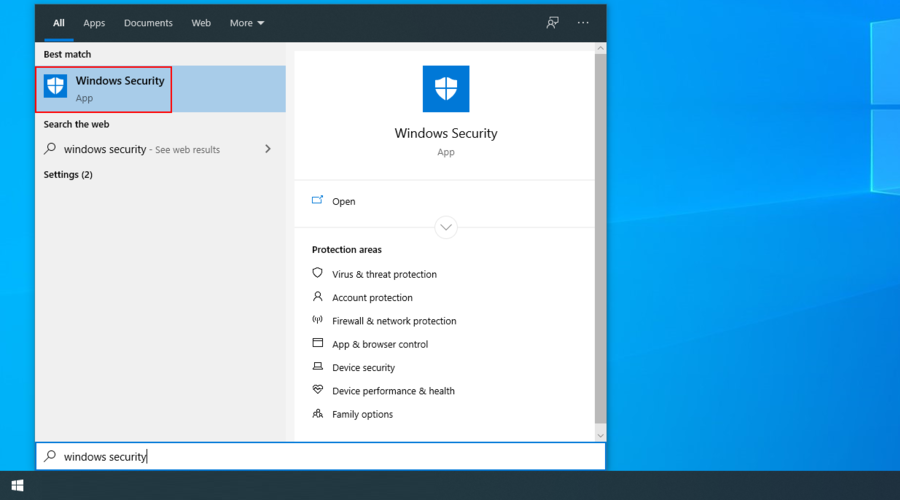
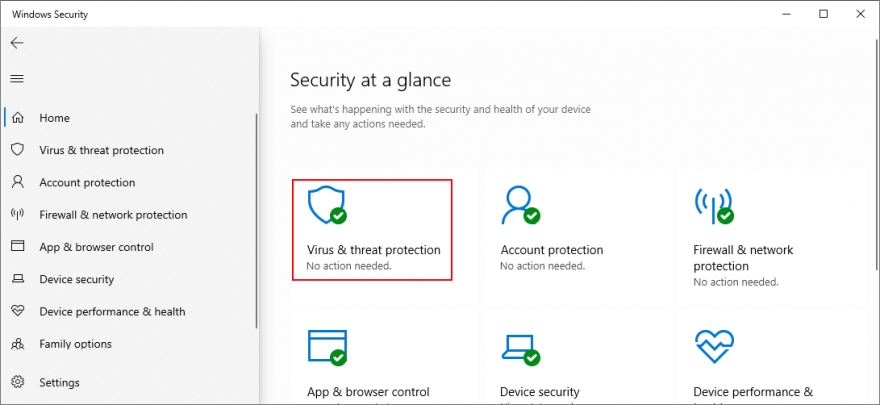
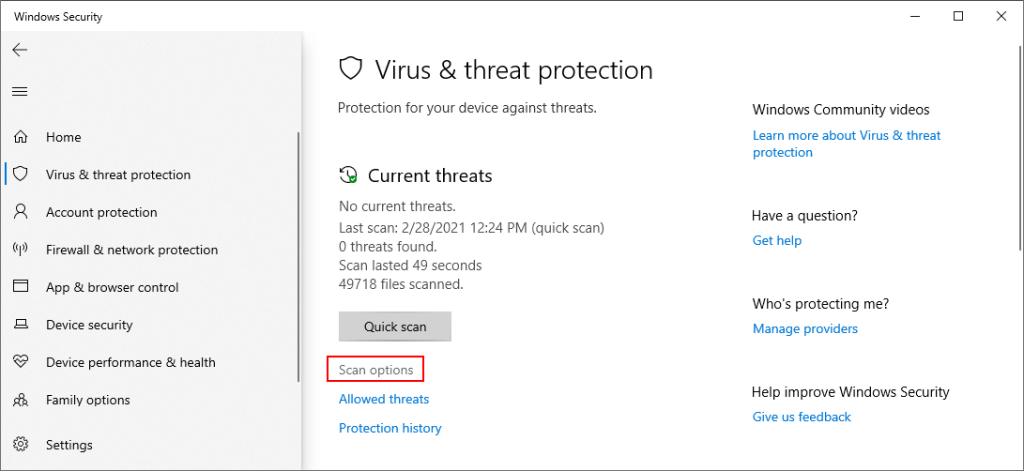
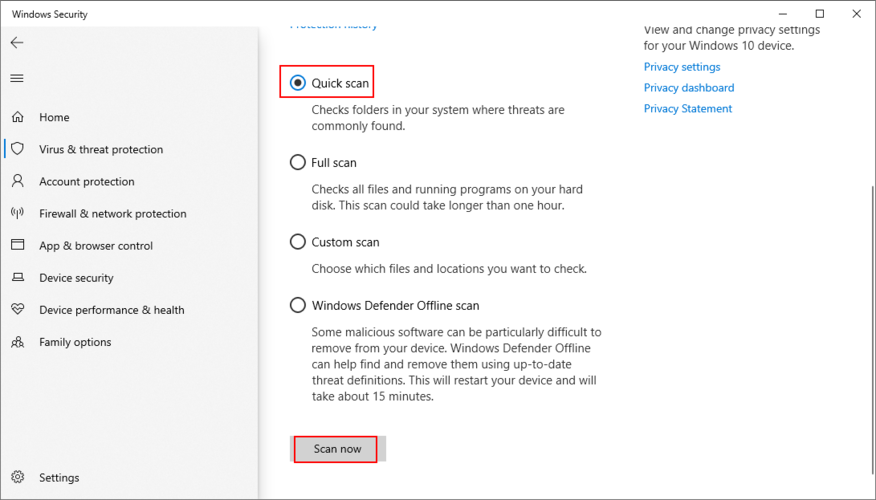
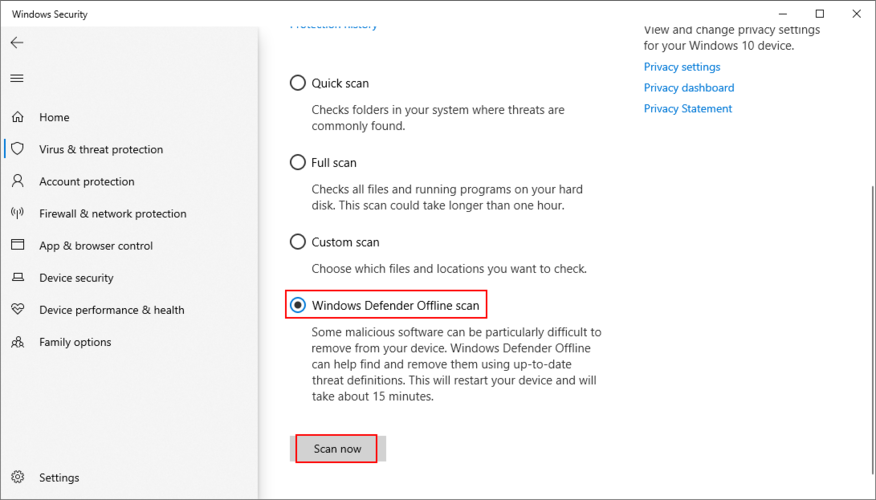
It’s a bit unusual, but IPv6 connectivity may conflict with Windows Update if your network doesn’t support IPv6. In turn, this can lead to error codes like 0x80080005. Unless you’re absolutely sure that your ISP supports IPv6 (you can contact it and ask), it’s safer to disable IPv6 connections on your PC.
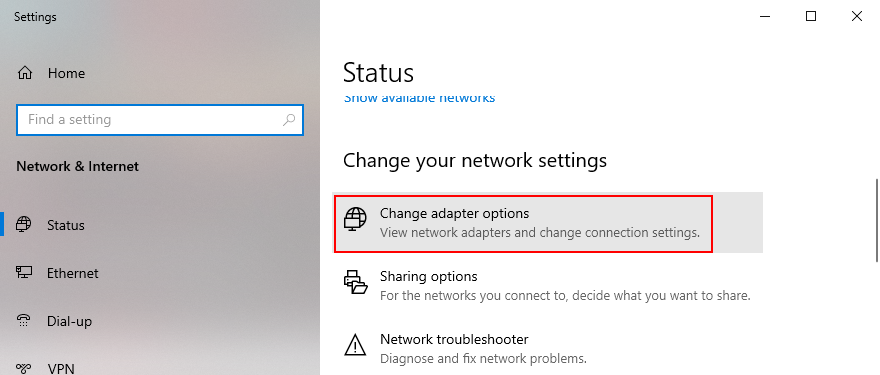
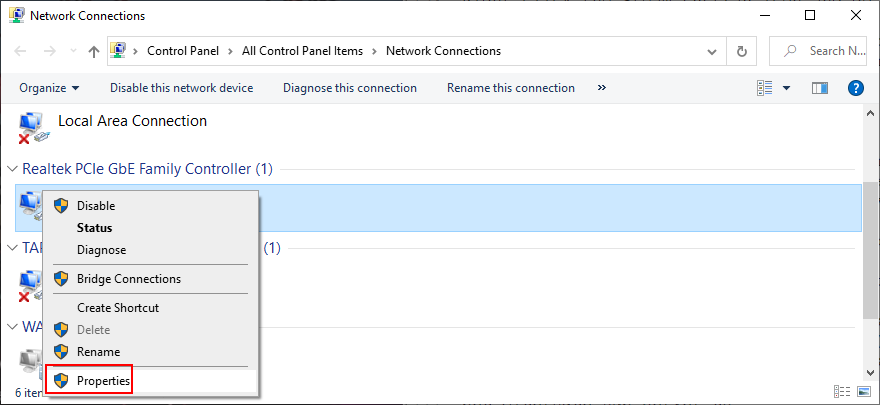
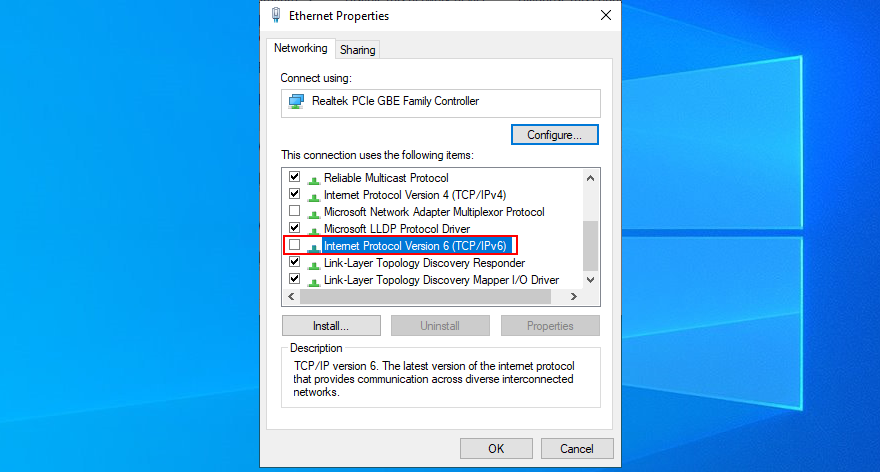
It’s also a good idea to turn disable IPv6 connectivity from your router’s admin panel.
You can also fix the 0x80080005 Windows Update error code by fixing several system registry settings using a registry cleaner or by manually making modifications. Don’t worry since you don’t need any previous experience, as long as you follow the instructions below.
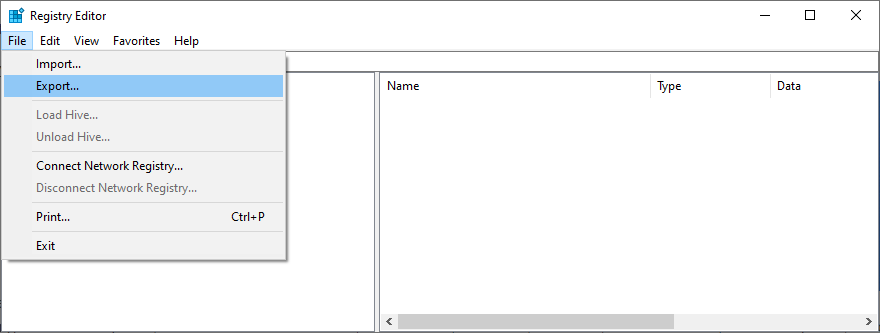
Computer\HKEY_LOCAL_MACHINE\SOFTWARE\Microsoft\Windows\CurrentVersion\WindowsUpdate\Auto Update
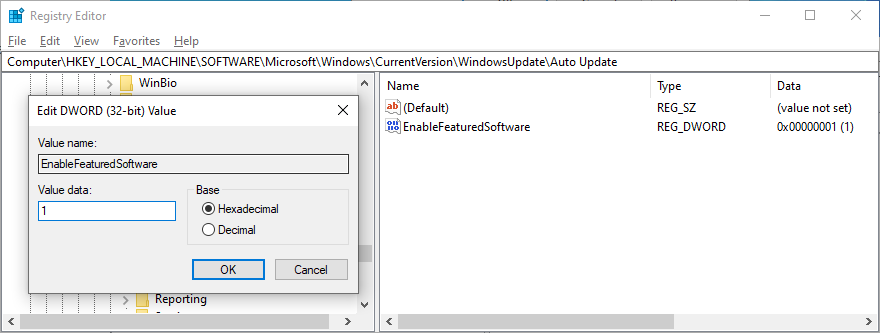
HKEY_LOCAL_MACHINE\SOFTWARE\Microsoft\WindowsUpdate\UX
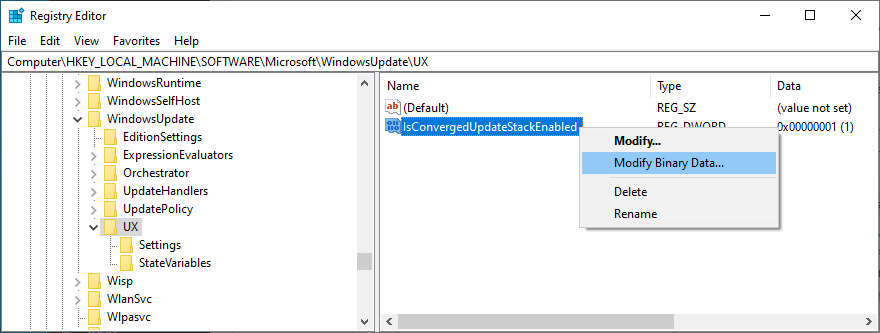
HKEY_LOCAL_MACHINE\SOFTWARE\Microsoft\WindowsUpdate\UX\Settings
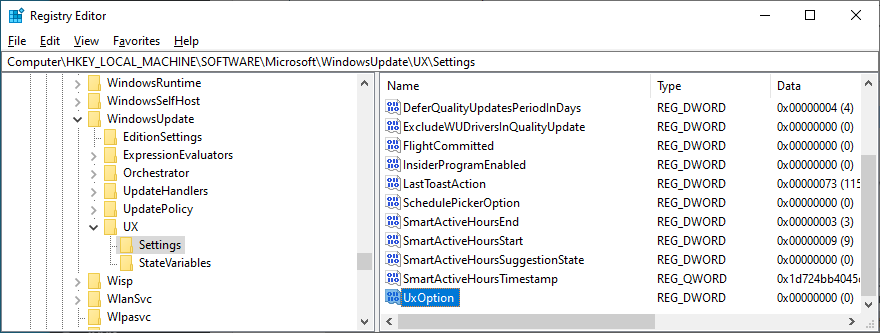
HKEY_LOCAL_MACHINE\SOFTWARE\Policies\Microsoft\SystemCertificates
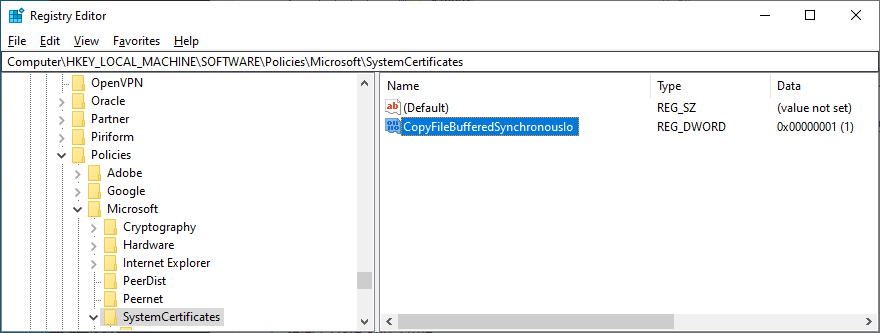
If, for any reason, you need to roll back the changes you made in the registry, just double-click the .reg backup file you previously created to restore the original registry configuration.
The Windows advanced troubleshooting mode gives you the possibility to fix boot issues that might prevent your operating system from working properly by running Startup Repair. It’s worth a shot when it comes to repairing Windows Update errors. Here’s how to use it:


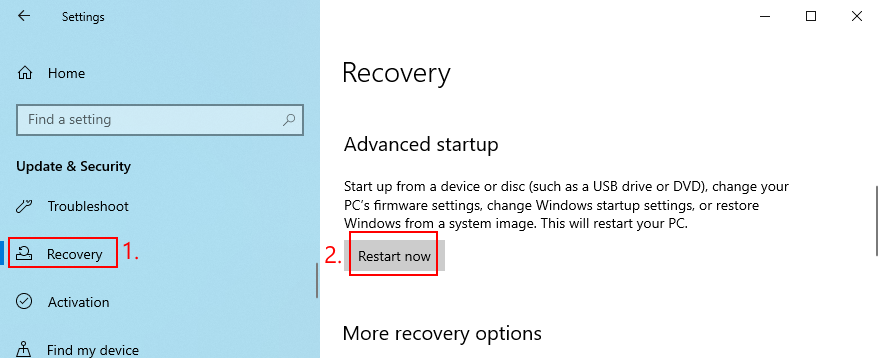
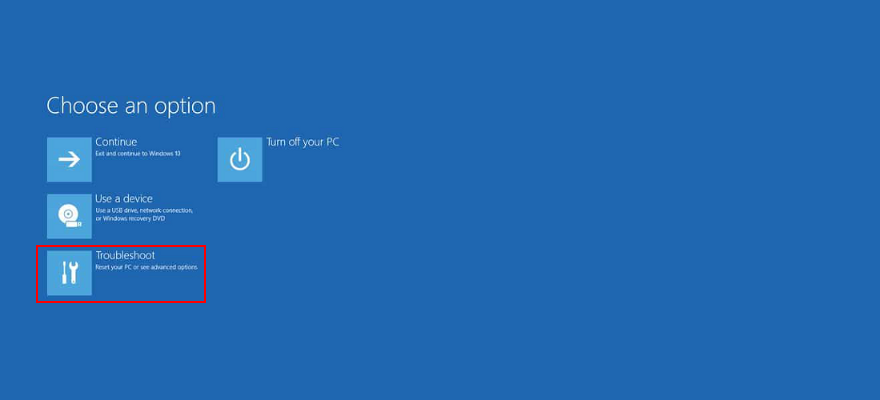

For any other unforeseen software events that you can’t identify but may have damaged Windows Update, turn to System Restore. If you have created a restore point before starting to receive error code 0x80080005 on each attempt to update the OS, you can roll back Windows 10 to that state. Here’s how:
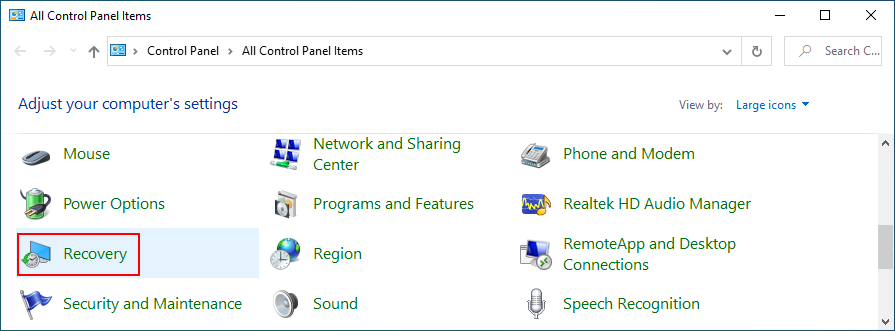
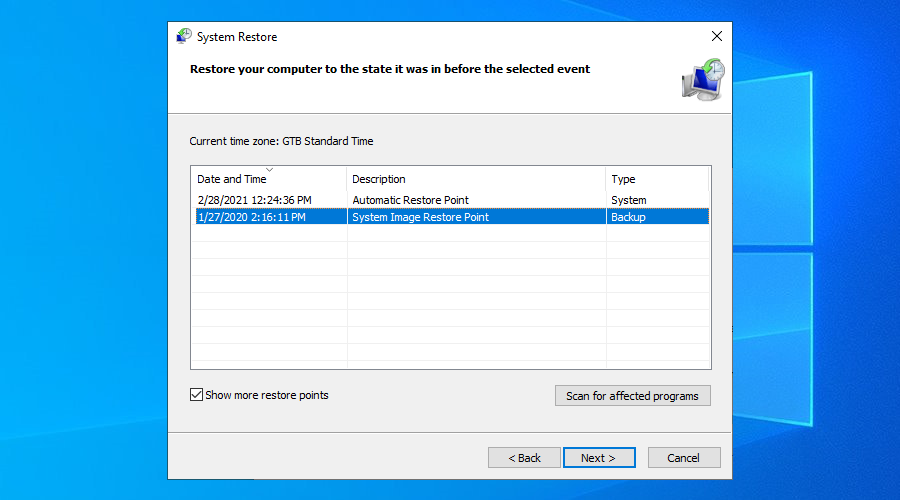
Unfortunately, System Restore fails to work on many occasions. After exhausting all the previous solutions and still getting hampered by error code 0x80080005, it’s time to reset Windows 10.
Your files, downloads, and game saves will be left untouched. However, all your applications will disappear from your PC. Here’s what you need to do:


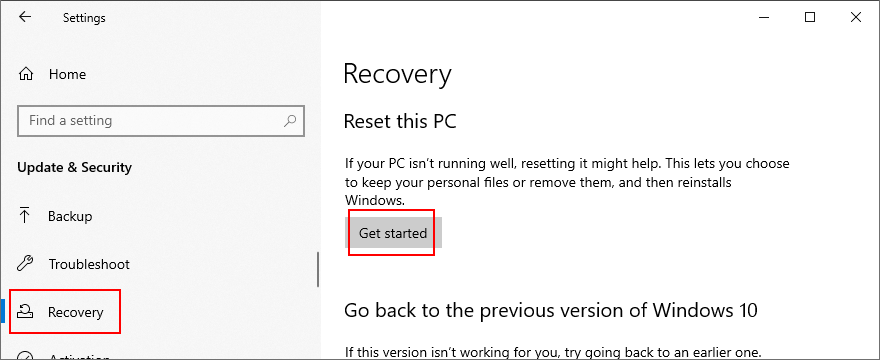
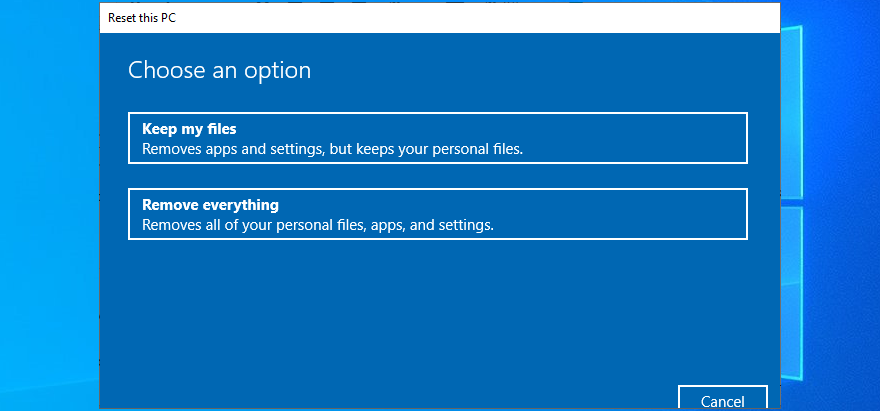
To sum up, 0x80080005 is an error code that pops up on the screen when trying to run Windows Update. It’s typically caused by a hardware or software problem that can be resolved.
Start by running the Windows Update troubleshooter and using the Windows Update Diagnostic tool. If these fail, restart the Windows Update and dependent services, turn off Network List Service, check Group Policy settings, reset Windows Update components, and unplug all peripheral devices.
You can also run a clean boot, temporarily deactivate your firewall, uninstall recent third-party software and system updates, check the disk space and network drivers, as well as repair any hard disk and operating system errors.
It’s also a good idea to run a computer scan to remove any malware, disable IPv6 connectivity if you don’t use it, fix registry settings and Windows startup problems, and roll back Windows 10 to a previous checkpoint. If everything fails, it’s time to factory reset Windows 10.
Did we miss any important steps? Let us know in the comment area below.
Как выключить компьютер с телефона
Центр обновления Windows работает в основном с реестром и различными файлами DLL, OCX и AX. В случае повреждения этих файлов большинство функций
В последнее время новые пакеты системной защиты появляются как грибы после дождя, и каждый из них приносит с собой очередное решение для обнаружения вирусов и спама, и если вам повезет,
Узнайте, как включить Bluetooth в Windows 10/11. Для корректной работы Bluetooth-устройств Bluetooth должен быть включён. Не волнуйтесь, это просто!
Ранее мы рассмотрели NitroPDF, удобную программу для чтения PDF-файлов, которая также позволяет пользователю конвертировать документы в PDF-файлы с такими функциями, как объединение и разделение PDF-файлов.
Вы когда-нибудь получали документ или текстовый файл, содержащий лишние символы? Текст содержит множество звёздочек, дефисов, пустых пробелов и т. д.?
Так много людей спрашивали о маленьком прямоугольном значке Google рядом с кнопкой «Пуск» Windows 7 на моей панели задач, что я наконец решил опубликовать это.
uTorrent — безусловно, самый популярный клиент для скачивания торрентов на ПК. Хотя у меня он работает безупречно в Windows 7, у некоторых пользователей возникают проблемы.
Каждому человеку необходимо делать частые перерывы во время работы за компьютером. Если не делать перерывов, велика вероятность, что ваши глаза начнут вылезать из орбит (ладно, не вылезать из орбит).
Возможно, вы, как обычный пользователь, привыкли к нескольким приложениям. Большинство популярных бесплатных инструментов требуют утомительной установки.
